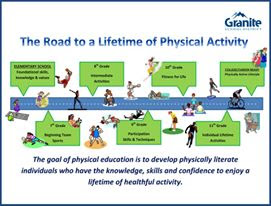Psychology And Sports
Meaning and definition of psychology
Meaning and definition of psychology
Psychology is the science of human behaviour.
Meaning and definition of sports of psychology
Sports psychology for physical education is that branch of psychology which deals with the physical fitness of an individual through his participation in games and sports.
Importance of sports psychology
It is well known fact that in the feild of sports the sports physiology and sports biomechanics have achieved a very high level, and the scope for further development seems to be less .
- Enhancement of physiological capacities
- Learning the motor skills
- In understanding the behaviour
- In controlling the emotions
- In preparation athletes psychologically for competitions
- Role in the emotional problems of sportspersons
Define and differentiate between growth and development
Meaning of growth and development
The main aim of physical education is the harmonious development of an individual. So, the growth and development of human beings are really very important in physical education.
Definitions of growth and development
It can be said that growth is used physically. Generally, it is related to an individual's size, height and changes in weight. Indeed, changes in quantitative aspects are included in the scope of growth. Whereas, development is related to all types of changes in shape or structure, which enhance the working efficiency of an individual. These changes are more related to qualitative aspects than quantitative aspects .
Difference between growth and development
Growth can be measured, whereas development presents a multiple change in behaviour , efficiency and capability. It is not an easy job to measure this type of change in development .It can only be observed.
Growth can be measured, whereas development presents a multiple change in behaviour , efficiency and capability. It is not an easy job to measure this type of change in development .It can only be observed.
Developmental characteristics at different stages of development
Development is not limited to growing larger instead it consists of a progressive series of changes of an orderly , coherent type towards the goal of maturity. In fact , growth is related to the change in size, weight and height of any individual, whereas development is related to the changes in all aspects of an individual such as physical development, mental development, social development, emotional development , motor development etc.
- Infancy - The stage from birth to the end of 5 years of age is called infancy. In this stage, the grasping power of an infant's brain becomes very fast. His capability to know new words increases. He starts understanding the simple conversation of adults. In this stage, the curiosity drive of the child also increases. They try to ask various questions and are easily satisfied by the answers of elder persons.In this stage the infant's learn the activities related to motor skills such as walking, running, unwilling , catching and throwing etc.
- Childhood -the childhood stage begins from the 6th year and ends by the end of the 12th year. In this stage, the children are able to have enough control on their muscles. During this stage, the social qualities develop in them very quickly. They like to play with girls and boys of equal age. They become able to adjust their behaviour in a society, owing to their appropriate development of social qualities
- Adolescence - the adolescence is a stage of complex changes , which begins after childhood and ends before adulthood. Generally, it is supposed that the adolescent stage begins from 13 years and remains till 19 years, therefore it is also called "teenage"
- Physical characteristics - in the stage , the growth becomes very fast.In adolescent period, many physical changes take place spontaneously. The development of internal and external sexual organs begins in the adolescents rapidly . During the period of 12 to 14 years, various changes can be seen specially in girls. In this stage, menstrual cycle begins in girls and nightfall begins in boys. Hair starts appearing in the axilla and pubic region. The enlargement of breasts begins in girls. The voice of girls becomes soft, sweet and light . Moustaches and beards start appearing on the faces of boys.
- Mental characteristics -physical growth and mental growth go simultaneously, but it is not applicable for all the adolescents . They are curious to know more and more about the people , places and principles. They demand self-respect , dignity and self-independence . They find little difficulty for adjustment with other people.
- Emotional characteristics- the life of an adolescent is full of emotions. Sexually, they become active in this stage. They are unable to have proper control over their emotions such as sex, anger, love, greed, hate and jealousy, etc. Due to wrong sexual relations, they are entrapped in anxiety and physical ailments. They Do not bear their disrespect and disgrace. Sometimes, they do not even like the suggestion or guidance given by someone.
- Social characteristics- usually , the adolescents adopt the way, which is selected by them but the society creates various obstacles in their way. In such condition, the adolescents revolt against the traditions and customs of the society. During this stage , friends are very important to them. They exchange their views, knowledge and experiences with one another.
- Motor characteristics -motor coordination tends to improve during this stage. Improvement is also seen in coordinative abilities in boys in comparison to girls. There is a rapid development of maximum strength and explosive strength in boys, whereas, strength abilities in girls improve very less.
Adolescent problems and their management
Meaning of adolescence
Adolescence is the period through which a growing person makes transition from childhood to maturity.
Problems of adolescents
- Physical problems
- Mental problems
- Problem of aggressive behaviour
- Lack of stability and adjustment
- Emotional problems
- Problems related to sex
- Problems of self support
- Feeling of importance
- Social problems
Management of problems
- Education for motor development
- Eeducation of psychology
- Sex education
- Vocational guidance
- Moral and religious education
- To provide suitable environment
- Adequate independence
- Social education
Define learning, laws of learning and transfer of learning
Meaning and definition of learning
Learning takes place from womb to tomb.
Learning means to adjust or adapt oneself according to the situation. Learning consists in doing something new provided, this something new to be retained by the individual and reappears in his later activities.
Laws of learning
- Primary laws of learning -
- Law of readiness - the law of readiness is also known as the law of preparedness. According to this law" the learner learns when he is ready to learn ". This law States, " when any conduction unit is ready to conduct, for it do so is satisfying, when any conduction unit is not in readiness to conduct for it to conduct annoying" . According to thorndike, " maturity and interest are essential for readiness."
- Law of effect - according to this law, if the effort in doing any work in enjoyable or pleasant, the individual tries to learn that activity quickly and learns it too . On the contrary, if the result after effort is painful or full of sorrow, the individual donot take interest in that activity and finally leave that activity.
- Law of exercise- according to this law, " when a modifiable connection is made frequently between a situation and a response, the strength of that connection is increased, but when modifiable connection is not made between a situation and a response over a length of time, strength of that connection is decreased."
- Secondary laws of learning
- Law of contiguity
- Law of attitude
- Law of belongingness
- Law of similarity
- Law of primacy
- Law of recency
- Law of contrast
Transfer of learning
Transfer of learning occurs when a person's learning in one situation influences his learning and performance in other situations.
Types of transfer of learning or training
- Positive transfer
- Negative transfer
- Applicational transfer
- Bilateral transfer
- Proactive transfer
- Retroactive transfer
Factors affecting transfer of learning
- Learner's will
- Learners intelligence
- Learners personal achievement
- Identical subject matter
- Training transfer
- Depth of original understanding
Plateau and causes of plateau
Plateau
when we learn any skill in the feild of sports, we find rapid progress in the beginning but after sometime, the progress stops itself. We do not get any progress after training. It seems useless to do further training. Our progress ceases. This stage is called " plateau of learning" .
when we learn any skill in the feild of sports, we find rapid progress in the beginning but after sometime, the progress stops itself. We do not get any progress after training. It seems useless to do further training. Our progress ceases. This stage is called " plateau of learning" .
Causes of plateau
- Deficiency in physiological power
- Too much time spent in one training environment
- Competition schedule
- Less interest
- Too rapid progress at the start
- Use of old methods of training
- Lack of concentration
- Toughness of the skill
- Fatigue of staleness
- Poor coaching or training
- Environmental pollution
Emotions: concept and controlling of emotions
Concept of emotion
Emotion is a moved or stirred up state of feeling in an individual, linked with some tendency. There are physiological changes associated with each emotion frequently of a muscular or glandular nature.
Methods of controlling of emotions
- Control your breathing
- Meditation
- Repression
- Introspection
- Suggestions by the coaches/ teachers
- Avoid the situation
- Redirection
- Practise progressive muscle relaxation
- Exercise .


Comments
Post a Comment